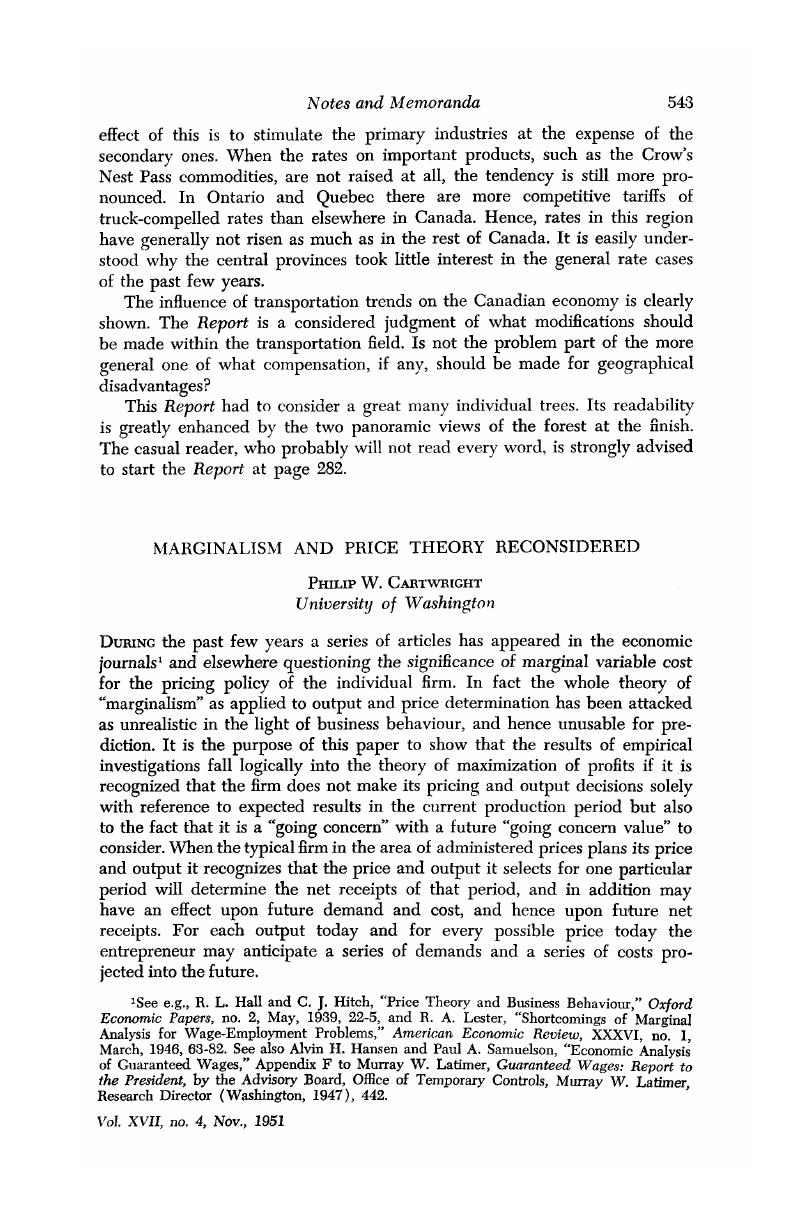Published online by Cambridge University Press: 07 November 2014

1 See e.g., Hall, R. L. and Hitch, C. J., “Price Theory and Business Behaviour,” Oxford Economic Papers, no. 2, 05, 1939, 22–5Google Scholar, and Lester, R. A., “Shortcomings of Marginal Analysis for Wage-Employment Problems,” American Economic Review, XXXVI, no. 1, 03, 1946, 63–82.Google Scholar See also Alvin H. Hansen and Paul A. Samuelson, “Economic Analysis of Guaranteed Wages,” Appendix F to Latimer, Murray W., Guaranteed Wages: Report to the President, by the Advisory Board, Office of Temporary Controls, Latimer, Murray W., Research Director (Washington, 1947), 442.Google Scholar
2 Reder, M. W., “Inter-Temporal Relations of Demand and Supply within the Firm,” Canadian Journal of Economics and Political Science, VII, no. 1, 02, 1941, 33–8.Google Scholar See also Hicks, J. R., Value and Capital (2nd ed., Oxford, 1946), chaps. 15 and 16.Google Scholar
3 Many of them can be found as far back as Marshall's Principles.
4 The Nunn-Bush Shoe Company, for example, has such a contract.
5 Discontinuities in the current cost functions may, of course, still prevent equality of marginal cost and marginal revenue; but even then, output will tend to be carried to the point where the additional cost of the last increment of output is less, while that of an additional increment would be greater, than the corresponding increment in revenue.
6 Keirstead, B. S., The Theory of Economic Change, (Toronto, 1948), chap. 11.Google Scholar Professor Keirstead with a similar graphic technique introduces time as a variable to describe the expansion path of the firm. On pages 251-3 he indicates that the actual price and output of the firm may deviate from the conventional equilibrium positions because of incorrect forecasting. The relationship of time as a variable is quite different at this point in Professor Keirstead's discussion from that in our discussion above. Professor Keirstead's graphic illustration describes the price and output which will obtain through time, given certain assumptions concerning expansion of fixed assets. Our illustration is designed to show how the relationship between the future phenomena and present policy affects the present price and output and policies of the firm. It does not purport to show what may actually occur through time. However, in section 2 of chapter 11 (pp. 254-7) Professor Keirstead treats one of the important reasons which we have discussed above why the firm may prefer not to maximize profits at a point of time but only over time.
7 Bain, Joe S., Pricing, Distribution, and Employment (New York, 1948), 161.Google Scholar Professor Bain has described the cause of price rigidity of the monopolist in similar terms. After rejecting the thesis that the firm maximizes profits in each of a series of short-run periods he states, “Instead it must be generally recognized (1) that the price charged for a good in earlier periods will affect the level of demand for the good in later periods, and therefore, the profits of later periods; (2) that the costs of earlier periods, especially selling costs, may similarly affect the profits of later periods; and (3) that the monopolist will wish to maximize his aggregate or average profits over a succession of future periods and be willing to sacrifice immediate short-run profits for greater average profits over time.…
“In general we may suggest that the monopolists' price-output decision is in effect a series through time of related price-output decisions. It is only the combination of these decisions which might be expected to maximize the monetary earnings of the firm.”